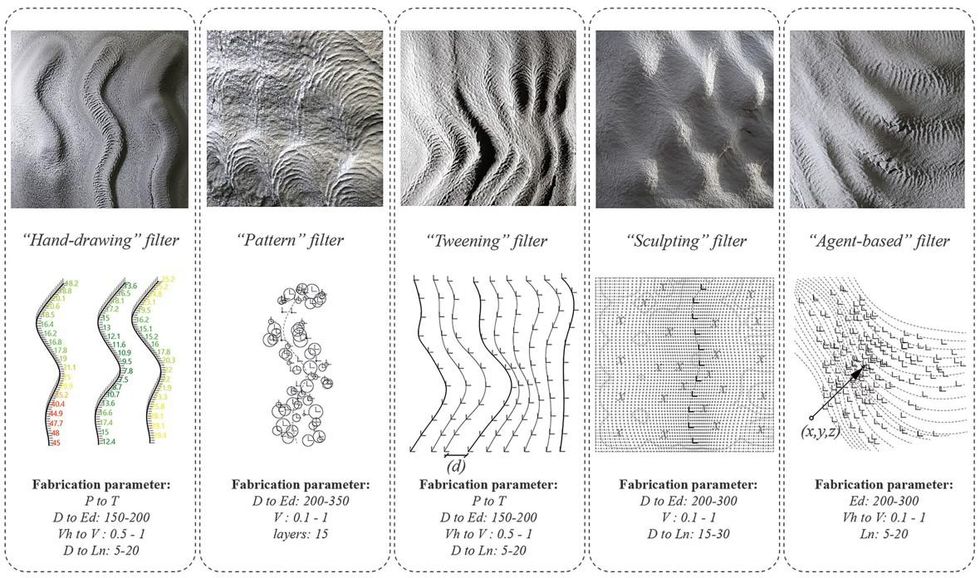

Robots are well known for having consistency and precision that humans tend to lack. Robots are also well known for not being especially creative—depending I suppose on your definition of “creative.” Either way, roboticists have seized an opportunity to match the strengths of humans and robots, while plastering over their respective weaknesses.
At CHI 2022, researchers from ETH Zurich presented an interactive robotic plastering system that lets artistic humans use augmented reality to create three-dimensional designs meant to be sprayed in plaster on bare walls by robotic arms.
Robotic fabrication is not a new idea. and there are lots of examples of robots building intricate structures, leveraging their penchant for precision and other robot qualities to place components in careful, detailed patterns that yield unique architectures. This algorithmic approach is certainly artistic on its own, but not quite as much as when humans are in the loop. Toss a human into the mix, and you get stuff like this:
I’m honestly not sure whether a human would be able to effectuate something with that level of complexity, but I’m fairly sure that if a human could do that, they wouldn’t be able to do it as quickly or repeatably as the robot can. The beauty of this innovation (besides what ends up on the wall) is the way the software helps human designers be even more creative (or to formalize and express their creativity in novel ways), while offloading all of the physically difficult tasks to the machine. Seeing this, I—perhaps naively—I feel like I could jump right in there and design my own 3D wall art (Which I would totally do, given the chance).
 A variety of filter systems can translate human input to machine output in different styles.
A variety of filter systems can translate human input to machine output in different styles.
And maybe that’s the broader idea here, that robots are able to slightly democratize some tasks that otherwise would require an impractical amount of experience and skill. In this example, it’s not that the robot would replace a human expert; the machine would let the human create plaster designs in a completely different way with completely different results than what human hands could generate unassisted. The robotic system is offering a new kind of interface that enables a new kind of art that wouldn’t be possible otherwise, and that doesn’t require a specific kind of expertise. It’s not better or worse, it’s just a different approach to design and construction.
Future insyantiations of this system will hopefully be easier to use; as a research project, it requires a lot of calibration and the hardware can be a bit of a hassle to manage. The researcherssay they hope to improve the state of play significantly by making everything more self-contained and easier to access remotely. That will eliminate the need for designers to be on site. While a system like this will likely never be cheap, I’m imagining a point at which you might be able to rent one for a couple of days for your own home, so you can add texture (and perhaps eventually color?) that will give you one-of-a-kind walls and rooms.
Interactive Robotic Plastering: Augmented Interactive Design and Fabrication for On-site Robotic Plastering, by Daniela Mitterberger, Selen Ercan Jenny, Lauren Vasey, Ena Lloret-Fritschi, Petrus Aejmelaeus-Lindström, Fabio Gramazio, and Matthias Kohler from ETH Zurich, was presented at CHI 2022.
Reference: https://ift.tt/Kw74PsB
No comments:
Post a Comment